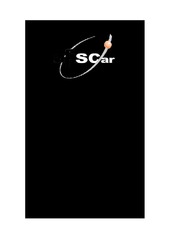| dc.contributor.author | Villela, Tereza Cristina Rodrigues | |
| dc.date.accessioned | 2019-03-28T18:35:14Z | |
| dc.date.available | 2019-03-28T18:35:14Z | |
| dc.date.issued | 2018-02-27 | |
| dc.identifier.citation | VILLELA, Tereza Cristina Rodrigues. Estratégias no ensino de vestir-se e alimentar-se para uma criança com baixa visão. 2018. Tese (Doutorado em Educação Especial) – Universidade Federal de São Carlos, São Carlos, 2018. Disponível em: https://repositorio.ufscar.br/handle/ufscar/11164. | * |
| dc.identifier.uri | https://repositorio.ufscar.br/handle/ufscar/11164 | |
| dc.description.abstract | This work had the general objective of identifying and describing the useful resources
for teaching dressing and feeding activities for a child with low vision, and the specific
objective was to identify and describe the types of resources that help in the necessary
skills for the execution of dressing activities (dress dolls, dress up, put shoes on dolls
and wear shoes) and feeding ("feeding dolls", set the table, butter, jelly or curd on
bread, open cans of juice / put straws in the juice can, open jars of butter, jelly or curd,
and peel and cut bananas). Study participants were a five-year-old girl with low vision,
her mother - who responded to interviews and participated in two meetings with the
child and the researcher. During tasks was analyzed the type of help offered - total help,
which included doing the activity by the child; partial physical and oral help, assisting
the child in the accomplishment of an activity with his participation; oral help,
instructions or explanations of the activity appropriate to the needs of the child; and
absence of help, when the adult did not interfere - and the type of performance of the
participant; independent, when he performed alone; and refused, when he refused to do
the activity. The type of aid most frequently provided was partial aid, and the least
frequent aid was total aid. At the end of the meetings the child achieved independent
performance in all activities. We emphasize the importance of future studies that
investigate other autonomous life activities, with attention to help and information about
efficient mediations of the adult to different learning styles of these activities by
children with visual impairment. | eng |
| dc.description.sponsorship | Coordenação de Aperfeiçoamento de Pessoal de Nível Superior (CAPES) | por |
| dc.language.iso | por | por |
| dc.publisher | Universidade Federal de São Carlos | por |
| dc.rights.uri | Acesso aberto | por |
| dc.subject | Educação especial | por |
| dc.subject | Deficiência visual | por |
| dc.subject | Atividades de vida autônoma | por |
| dc.subject | Vestir-se | por |
| dc.subject | Alimentar-se | por |
| dc.subject | Special education | eng |
| dc.subject | Visual impairment | eng |
| dc.subject | Low vision | eng |
| dc.subject | Autonomous life activities | eng |
| dc.subject | Dress up | eng |
| dc.subject | Feeding | eng |
| dc.title | Estratégias no ensino de vestir-se e alimentar-se para uma criança com baixa visão | por |
| dc.title.alternative | Strategies for teaching to wear and feed for a child with low vision | eng |
| dc.type | Tese | por |
| dc.contributor.advisor1 | Gil, Maria Stella Coutinho de Alcântara | |
| dc.contributor.advisor1Lattes | http://lattes.cnpq.br/1673770301699940 | por |
| dc.description.resumo | Este trabalho teve por objetivo geral identificar e descrever recursos úteis ao ensino de
atividades de vestir-se e alimentar-se para uma criança com baixa visão, e como
específico, identificar e descrever tipos de recursos que auxiliem habilidades necessárias
à execução de atividades de vestir-se (vestir bonecos, vestir-se, calçar bonecos, e calçarse),
e alimentar-se (“alimentar bonecos”, colocar a mesa, passar manteiga, geléia ou
requeijão em pães, abrir latas de suco/colocar canudos na lata de suco, abrir potes de
manteiga, geléia ou requeijão, e descascar e cortar bananas). Participaram do estudo
uma menina com baixa visão, que tinha cinco anos de idade e sua mãe – que respondeu
a entrevistas e participou de dois encontros com a criança e a pesquisadora. Foram
analisadas durante atividades de alimentar-se e vestir-se as tarefas necessárias, o tipo de
ajuda oferecido – ajuda total, que incluía fazer a atividade pela criança; ajuda parcial
física e oral, auxiliar a criança na realização de uma atividade com sua participação;
ajuda oral, instruções ou explicações sobre a atividade adequadas às necessidades da
criança; e ausência da ajuda, quando o adulto não interferia - e o tipo de desempenho da
participante; independente, quando realizava sozinha; e recusa, quando negava-se a
fazer a atividade. O tipo de ajuda fornecido com maior frequência foi a ajuda parcial, e
o de menor frequência, foi a ajuda total. A criança conseguiu ao final dos encontros,
desempenho independente em todas as atividades. Ressalta-se a importância de estudos
futuros que investiguem outras atividades de vida autônoma, com atenção a auxílios e
informações sobre mediações eficientes do adulto para diferentes estilos de
aprendizagem dessas atividades por crianças com deficiência visual. | por |
| dc.publisher.initials | UFSCar | por |
| dc.publisher.program | Programa de Pós-Graduação em Educação Especial - PPGEEs | por |
| dc.subject.cnpq | CIENCIAS HUMANAS::EDUCACAO | por |
| dc.description.sponsorshipId | CAPES: Código do Financiamento 001 | por |
| dc.ufscar.embargo | Online | por |
| dc.publisher.address | Câmpus São Carlos | por |
| dc.contributor.authorlattes | http://lattes.cnpq.br/3863749702720046 | por |
